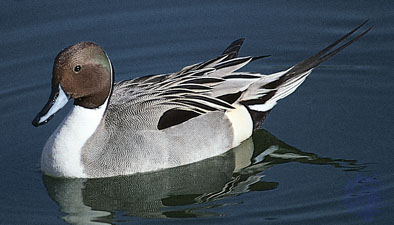

Duck
Subfamily
Anatinae, family Anatidae, order Anseriformes

|
Any of several genera of relatively small, short-necked, large-billed waterfowl that belong to the subfamily Anatinae, family Anatidae, order Anseriformes. In true ducks, i.e., those classified in Anatinae, the legs are placed rearward, as in swans, resulting in a waddling gait. Most true ducks, including a few inaccurately called geese by reason of size and build, differ from swans and true geese in the following characteristics: males molt twice annually, females lay large clutches of smooth-shelled eggs, and both sexes have overlapping scales on the skin of the leg and exhibit some degree of sexual differentiation in plumage and in call. All true ducks, except those in the shelduck group and sea ducks, mature in the first year and pair only for the season--unlike the late-maturing, life-mating true geese and swans. They are generally divided into three major groups, dabbling, diving, and perching ducks, based on their characteristic behaviours. The mallard, a typical dabbling duck, is one of the most popular game birds and is the ancestor of most domestic ducks owl). Perching ducks such as the muscovies have long claws and are the most arboreal of ducks, often roosting in trees. The diving ducks include the greatest number of marine species, such as the eider and the scoter, but also include the merganser group, most of which prefer freshwater areas. Members of the stifftail group, typified by the ruddy duck, are highly aquatic ducks, characterized by legs set far toward the rear of the body. The whistling duck species, also called tree ducks, are not true ducks but are more closely related to the geese and swans. Copyright 1994-1998 Encyclopaedia Britannica |